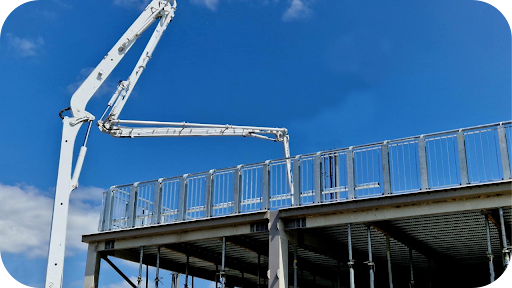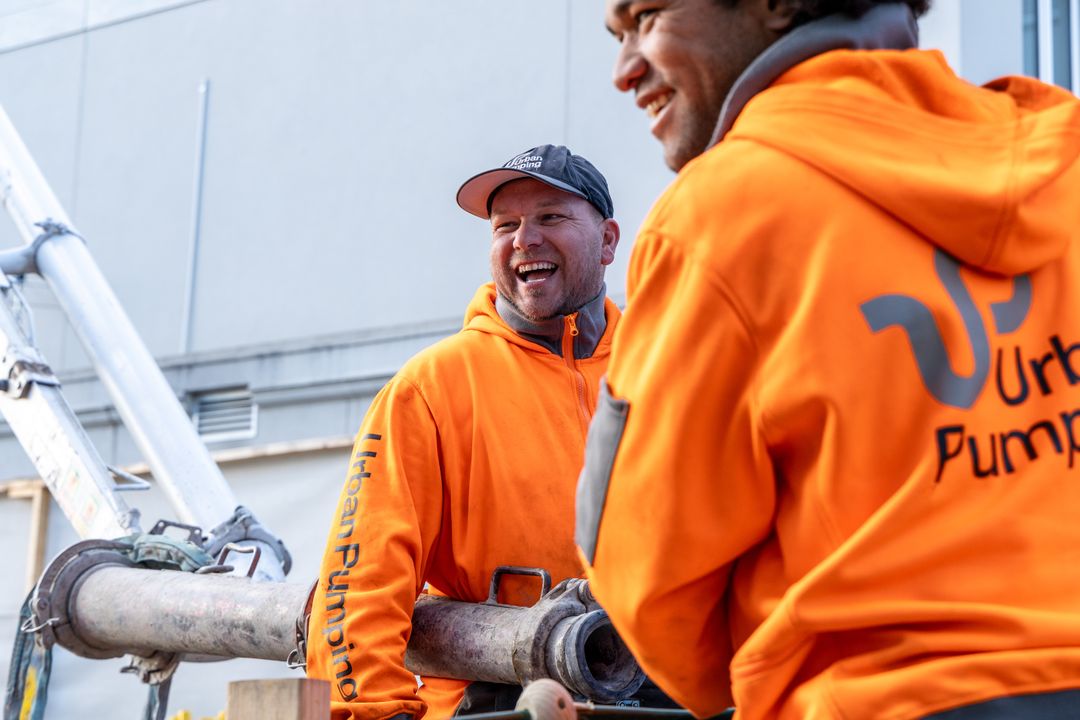
Melbourne’s construction scene is fast-paced, with projects ranging from towering high-rises to suburban home builds. In this environment, efficiency, safety, and cost-effectiveness all hinge on using the right equipment.
Concrete pumps play a vital role, and two of the most common options are boom pumps and line pumps.
Each offers unique benefits, yet choosing the wrong one can slow progress or add unnecessary expense. This article breaks down the differences to help you decide which pump best suits your project.
A boom pump is a truck-mounted concrete pump fitted with a hydraulic arm, or “boom,” that can extend and manoeuvre concrete pipes directly to hard-to-reach areas. This design eliminates the need for multiple hoses on the ground, making it a highly efficient choice for construction sites.
The greatest advantage of a boom pump lies in its long reach and fast delivery, ensuring large volumes of concrete are placed with minimal labour. In Melbourne, where high-rise buildings and large-scale commercial projects dominate the skyline, boom pumps are often the most practical option. They significantly reduce setup time and minimise physical strain on workers.
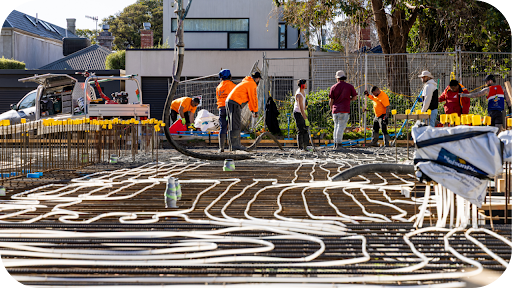
While the cost of hiring a boom pump is typically higher than that of a line pump, the speed, precision, and reduced labour requirements often balance the expense for larger projects.
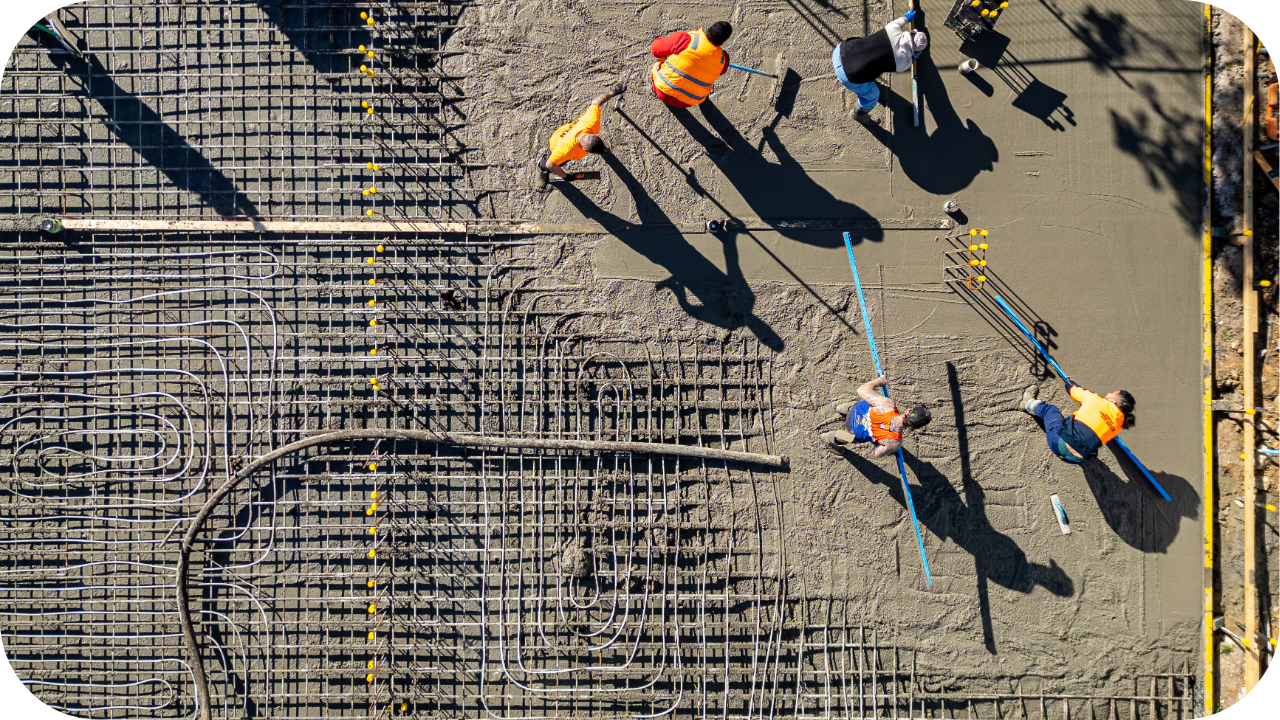
A line pump is a versatile concrete pumping system that uses flexible hoses or steel pipes attached to the pump, which is mounted on a trailer or truck. Concrete is pushed through the pipeline and directed exactly where it is needed, even in areas with restricted access.
The main strengths of a line pump are its flexibility, affordability, and suitability for smaller pours such as driveways, footpaths, swimming pools, and residential foundations. In Melbourne’s suburban areas, where many projects involve tight spaces or narrow streets, line pumps are often the most practical choice.
Although line pumps deliver concrete more slowly than boom pumps, their lower hire cost and easy setup make them appealing for homeowners, small contractors, and projects where large volumes aren’t required.
Choosing between a boom pump and a line pump is one of the most important decisions in any concrete project. Both options are highly effective, but their differences in setup, capacity, and application make each better suited to specific jobs. Below is a breakdown of the main contrasts to help guide the choice.
Boom pumps use a hydraulic arm that can extend over obstacles and place concrete in hard-to-reach areas, making them ideal for high-rise projects or large commercial sites. Line pumps, on the other hand, rely on hoses that can be arranged around tight corners, making them more practical for smaller or restricted-access jobs.
When it comes to volume, boom pumps can deliver a large amount of concrete quickly, which speeds up construction on major projects. Line pumps operate at a slower pace, but they allow for more controlled delivery, which is useful for detailed pours such as footpaths, patios, or pool surrounds.
Boom pumps require less manual labour during operation but generally come with higher hire costs. Line pumps are more affordable to hire and set up, but they often need more crew involvement to manage hoses and pipelines. This trade-off often comes down to project size and available budget.
Boom pumps are often the go-to for large-scale Melbourne builds, such as multi-storey apartments or commercial developments. Line pumps, however, are favoured for suburban projects like driveways and house slabs, where access is limited, and smaller pours are required.
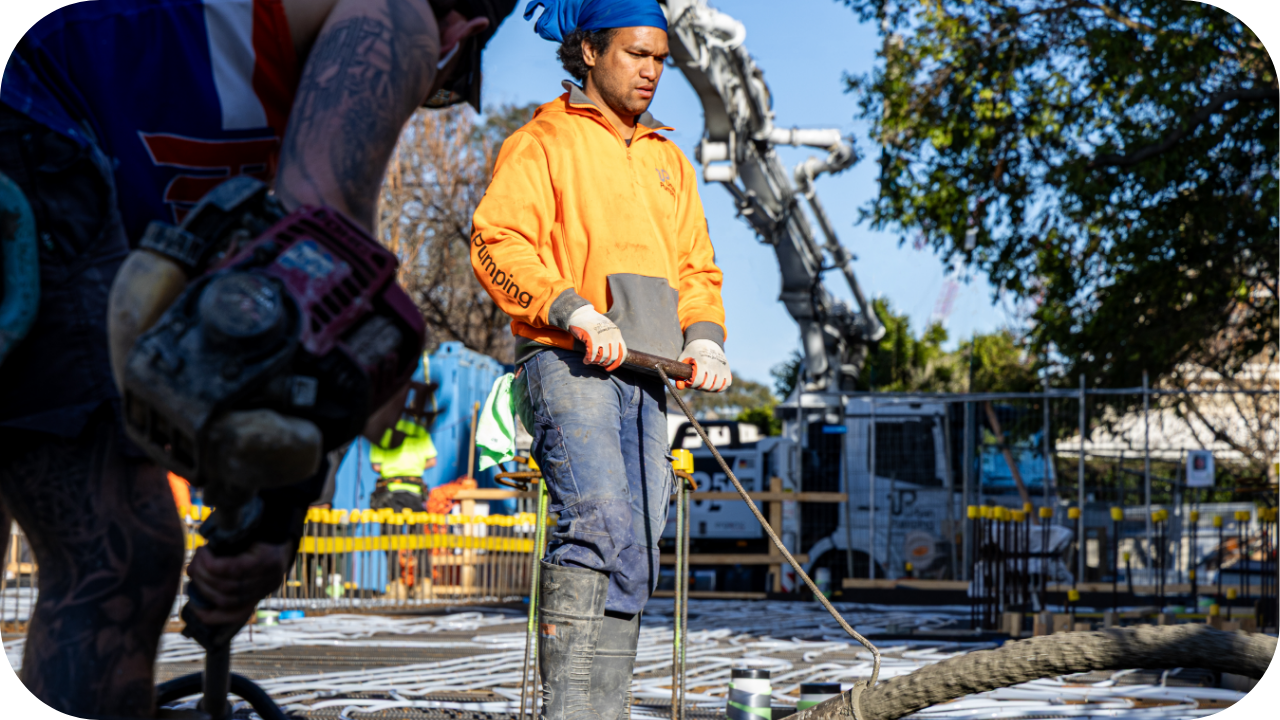
Selecting between a boom pump and a line pump is not just about preference; it comes down to industry guidelines for concrete pumping. From site access to safety standards, each factor plays a role in determining which option will deliver the best results. Here are the main considerations for Melbourne construction projects.
Melbourne building sites vary widely, from tight laneways in the CBD to spacious suburban blocks. Boom pumps, with their extending arms, excel in congested areas where equipment access is limited. Line pumps, however, are more adaptable for smaller sites, as hoses can be routed around obstacles with ease. Evaluating site conditions early ensures the pump selected can operate efficiently without delays.
For large-scale developments requiring high concrete output, boom pumps are usually the smarter choice. Their speed and reach make them ideal for high-rises, warehouses, or multi-unit projects. Line pumps are better suited for smaller pours, such as driveways, footpaths, or pool foundations. Matching pump type to concrete volume helps maintain cost control while avoiding unnecessary downtime.
Cost is often a deciding factor. Boom pumps come with higher hire rates, but they can save money by reducing labour needs and speeding up delivery on bigger projects. Line pumps are more affordable upfront, yet they may take longer and require more crew to manage the pour. Balancing project timelines with budget constraints will help determine the best option.
Melbourne construction projects must follow strict concrete pumping safety requirements in Victoria. Boom pumps, with their reduced manual handling, can lower the risk of on-site injuries. Line pumps involve more crew interaction, so proper training and safety checks are critical. Choosing a provider like Urban Pumping ensures compliance with local regulations while maintaining safe and efficient operations across all project types.
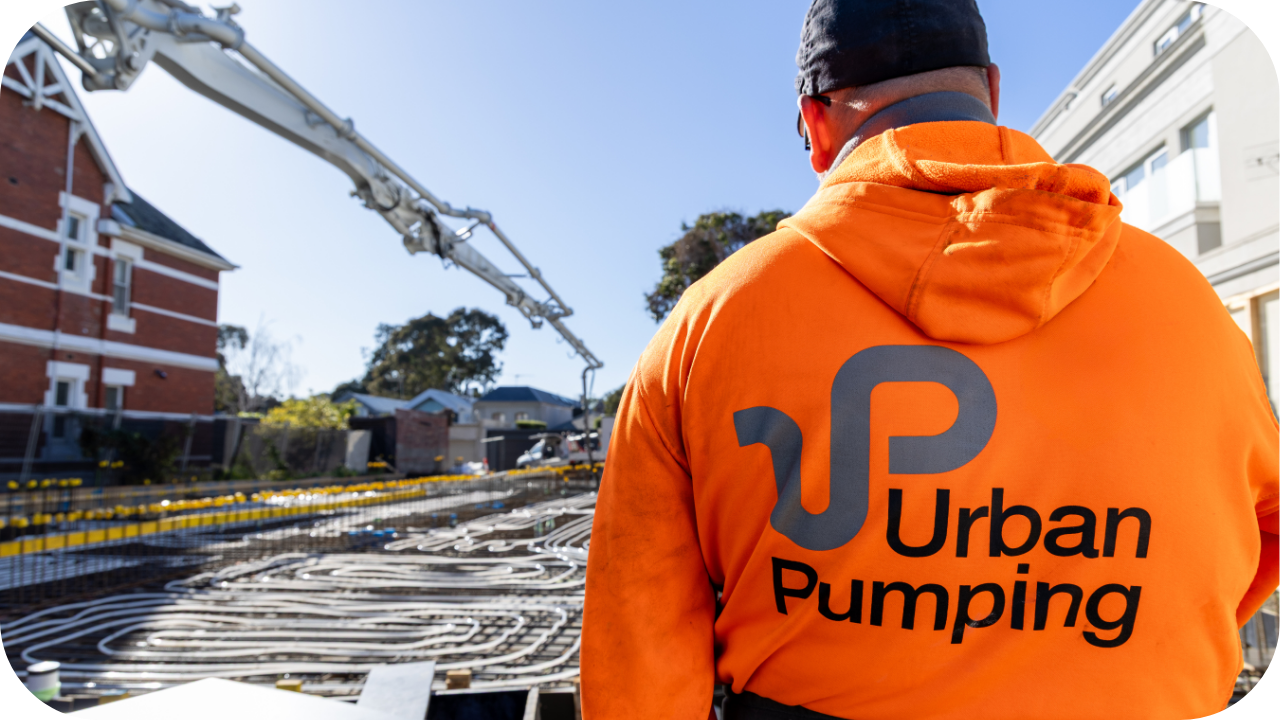
Choosing the right concrete pumping partner ensures your project runs smoothly. Urban Pumping stands out in Melbourne for several reasons:
Contact Urban Pumping today for a free quote and dependable concrete pumping services in Melbourne.
Every construction project in Melbourne depends on efficiency, safety, and precision, and choosing the right pump plays a central role in achieving these goals. Boom pumps are unmatched for high-rise or large-scale builds, while line pumps offer the flexibility and affordability needed for smaller, tighter sites. By understanding the differences and weighing them against your project’s requirements, the decision becomes much clearer.
At Urban Pumping, the team ensures clients receive expert guidance and reliable service tailored to each job. Whether you’re planning a suburban driveway or a multi-storey development, the right pump and the right partner will keep your project moving smoothly. Get a Free Quote today and keep your project moving without delays.
Light rain usually doesn’t stop pumping, but heavy rain or strong winds may delay operations, especially for boom pumps. Safety is always the top priority, and Urban Pumping will advise if conditions aren’t suitable.
For projects requiring road closures, footpath use, or public space access, council permits may be necessary. Urban Pumping can guide you through these requirements to ensure your project remains compliant.
Line pumps can typically extend up to several hundred metres using hoses, while boom pumps offer vertical and horizontal reach depending on boom length. Urban Pumping matches the right pump to each project’s access needs.
Urban Pumping ensures all operators are trained and compliant with Australian safety standards. Protective gear, site assessments, and equipment checks are standard practice to reduce risks and ensure smooth, safe operation.
